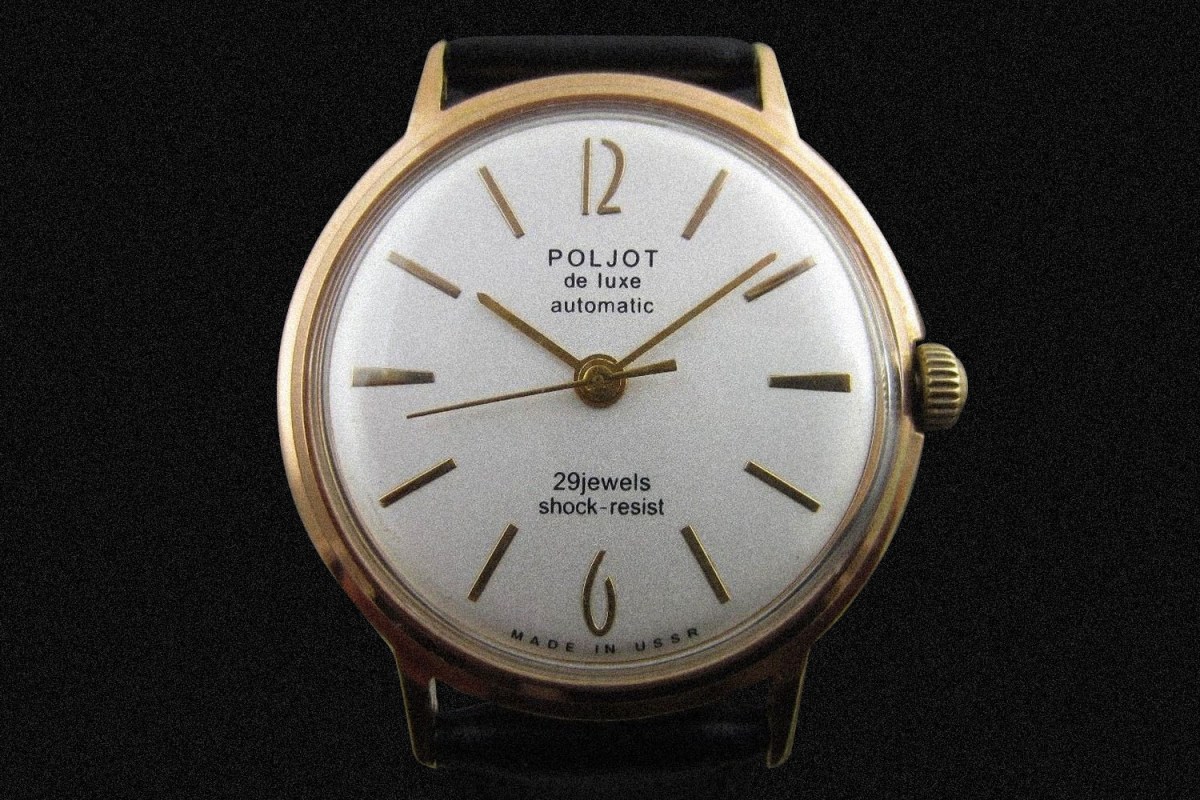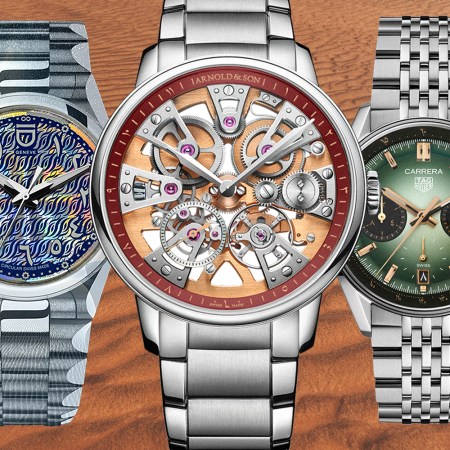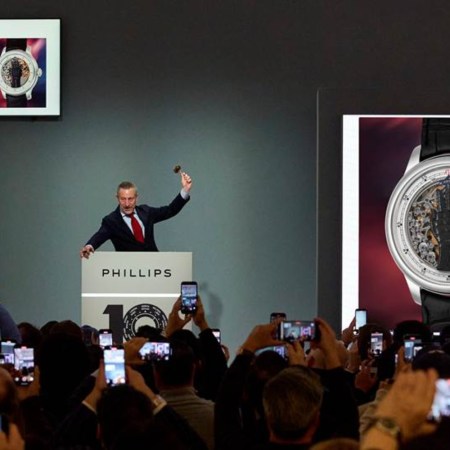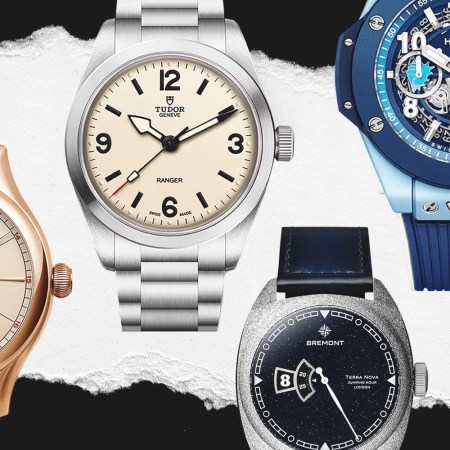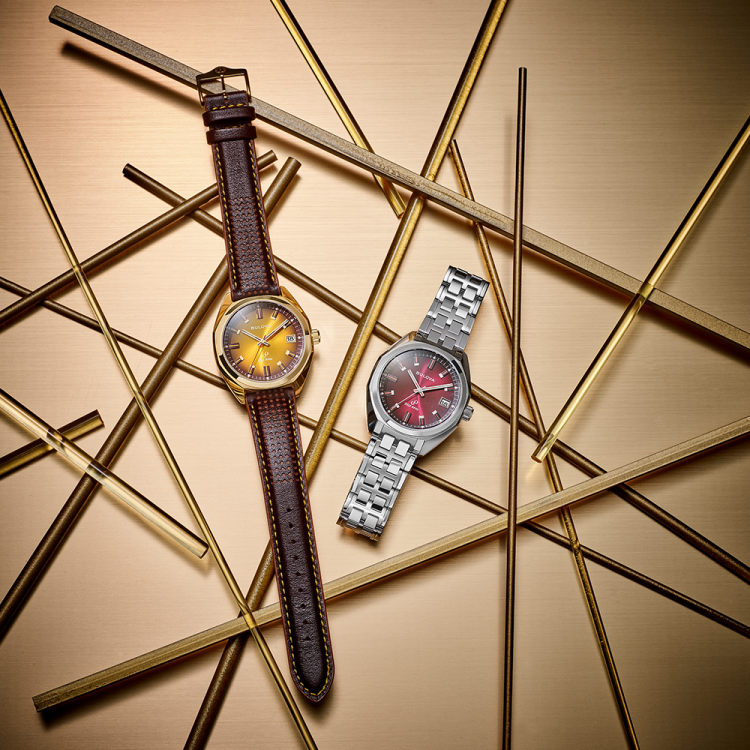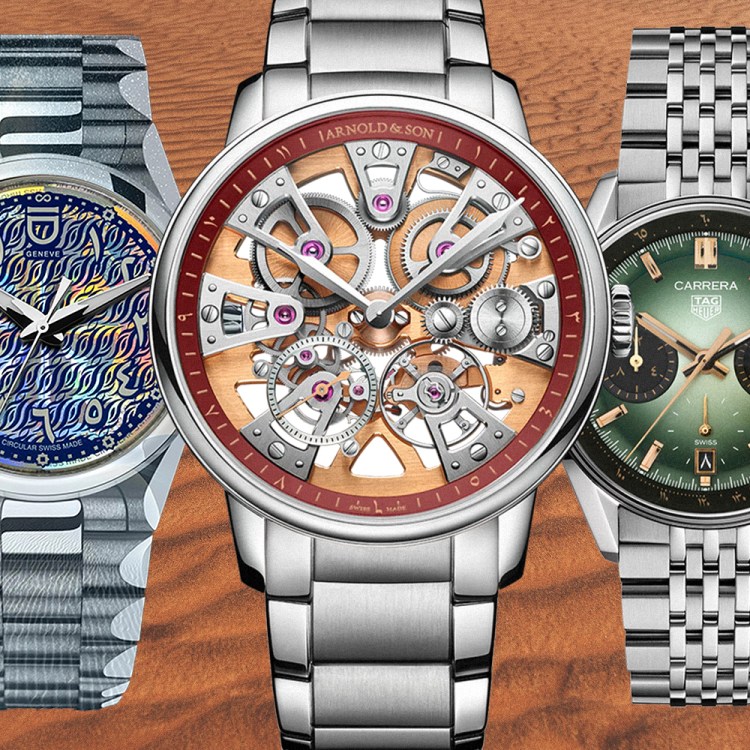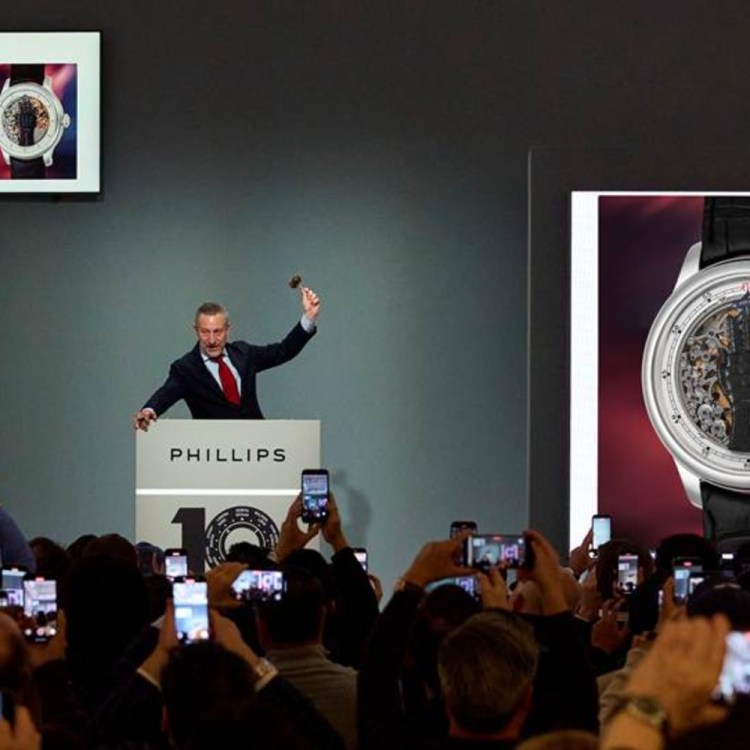In a 1997 essay, William Gibson, whose books Neuromancer and Pattern Recognition have likely helped sell more Japanese flight jacket repos than Rakuten Translate, described the allure of mechanical watches, those “finest fossils of the pre-digital age”:
Each one is a miniature world unto itself, a tiny functioning mechanism, a congeries of minute and mysterious moving parts. Moving parts! And consequently these watches are, in a sense, alive. They have heartbeats.
A second heartbeat on your wrist, who doesn’t want to live twice? Unfortunately, in the intervening decades, vintage watch collecting has gone from the provenance of “semi-savvy haunter[s] of Salvation Army thrift shops” like Gibson to a wider audience, one with fatter wallets and shorter attention spans. The most desirable watches now live on specialty auction sites, especially Swiss best-in-show brands like Rolex and Omega, where you can pay more for a vintage watch with “patina” than for one fresh from Geneva.
If you want the reassuring tick of clockwork to accompany you in the wee small hours but don’t want to look like you’re waiting for a table at Dorsia, you may have to defect. Because while the decadent West spent the 20th century falling in love with bauble-studded Swiss chronometers and Quartz-powered wrist computers, behind the Iron Curtain flourished a mirror horological tradition, with the U.S.S.R. producing millions of watches that can now be easily plucked from the rubbish pile of history.
Legend has it Stalin himself had a hand in the origins of Soviet watchmaking, overseeing the purchasing of two bankrupt Ohio firms that were imported — employees and all — to Moscow in 1930. From these came the First Moscow Watch Company, a temple of Russian horology, where state watchmakers developed a tradition of borrowing European and American watch designs and stripping them down to create, simple, dependable in-house mechanical movements paired with a fittingly bombastic Soviet design sensibility. Cheap and as durable as Kalashnikovs, these watches can be picked up for a song on eBay, where pickers and enthusiasts have made a cottage industry out of bringing Soviet wristwear to the world. Here’s where to start.
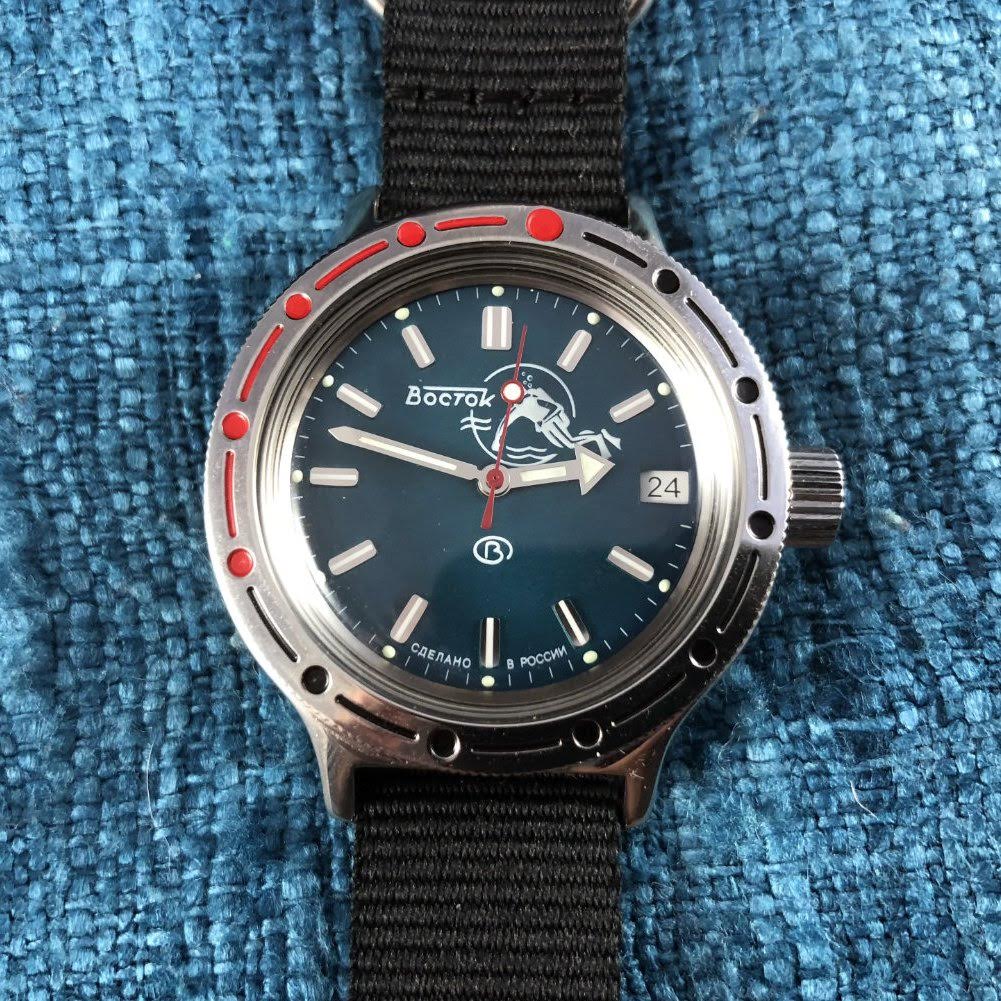
Vostok Amphibia
Divers wear dive watches because they’re useful. Rich people love them because they’re huge. Gianni Angell wore his over the cuff of his shirt, just in case you missed it. The Vostok Amphibia mercifully isn’t quite as dinner plate-sized as its decadent western counterparts (this becomes a theme with Soviet watches) but is just as full of character. The first Soviet diving watch has a steel watch case with a thick-domed lucite crystal, built to withstand the harsh North Sea. It’s a small dense piece of work that looks like a submarine porthole. Perhaps that’s why Wes Anderson outfitted the cast of The Life Aquatic with them. Incredibly popular in their day, there are many variations of this watch to be found, but the best of them feature a funny little Scuba man floating across the face, and a Pepsi colored dot-dash pattern around the bezel.
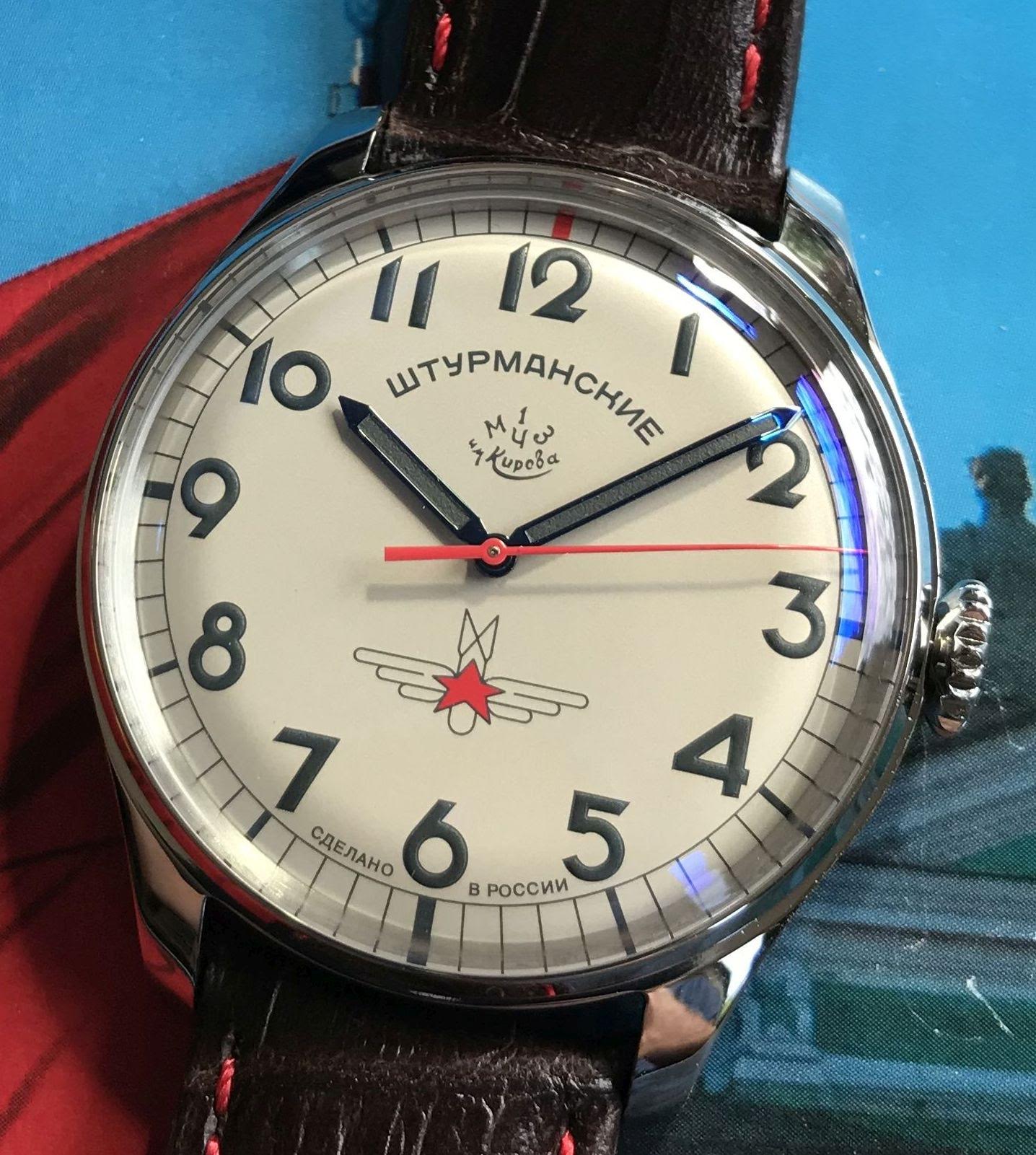
Stumanskie Gagarin
Stumankie, meaning Navigator, is what Soviet megabrand Poljot called the watches it produced exclusively for graduates of the Russian military academy. Yuri Gagarin made his Sturmanskie the first watch in space, which makes this an ideal substitute for an Omega moonwatch. It is, to be frank, a very macho affair, with an old-style painted dial, red second hand, and various little agitprop details. It’s not uncommon to find these watches “modified” with additional graphic flourishes on the dial, like portraits of Gagarin or exploding rockets, until they resemble Eastern Block ouija boards. There are rumors of Gargarins out there that feature Laika, the world’s first space dog, who as far as we know, ventured into the cosmos sans wrist watch.
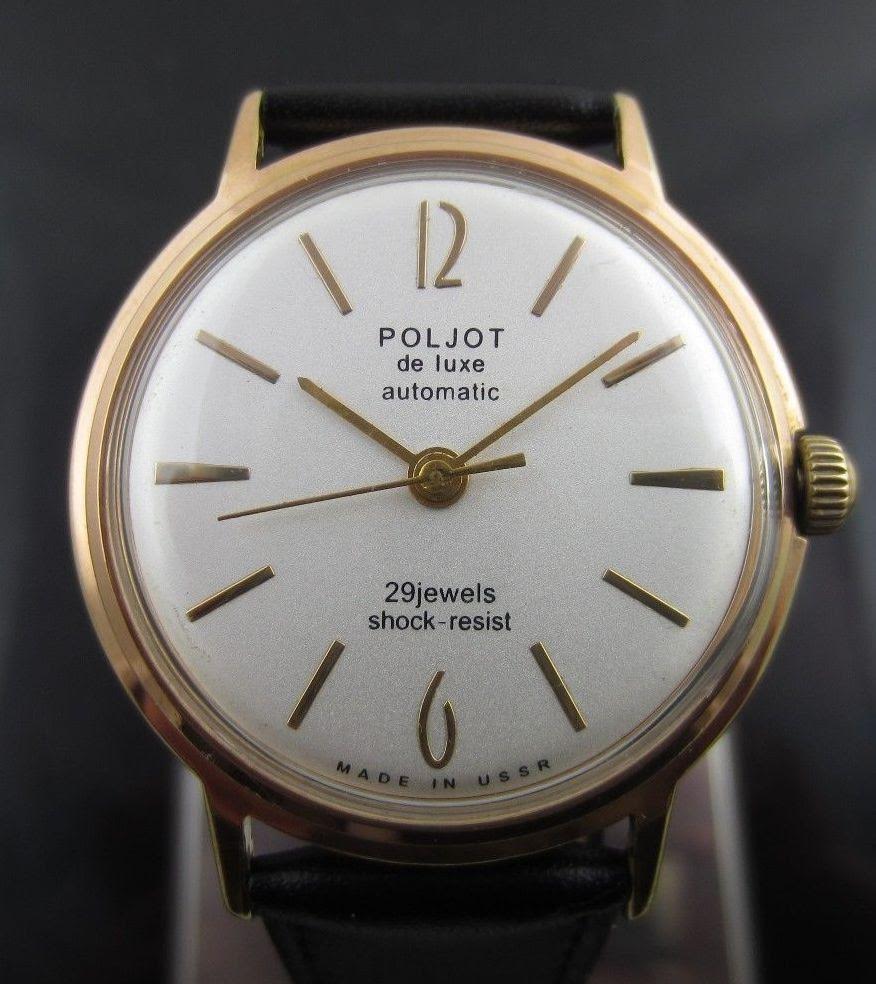
Poljot De Lux
Slim and a bit dressy, the De Lux looks an awful lot like the Timex Marlins you would have seen peeking out from the sleeves of gray flannel suits across America during the ’60s and ’70s. These watches didn’t go to outer space or the bottom of the deep blue sea, they went to work. As a result they’re a smaller watch than most men are accustomed to today, but I say that’s a good thing. I like to imagine this was the kind of watch worn by the mercurial KGB agent Karla in John le Carré’s novels, something that made him seem as unassuming as a Kansas City insurance salesman. My favorite models feature art deco numerals at the four cardinal points that are reminiscent, again, of Timex’s salaryman classic, the Marlin.
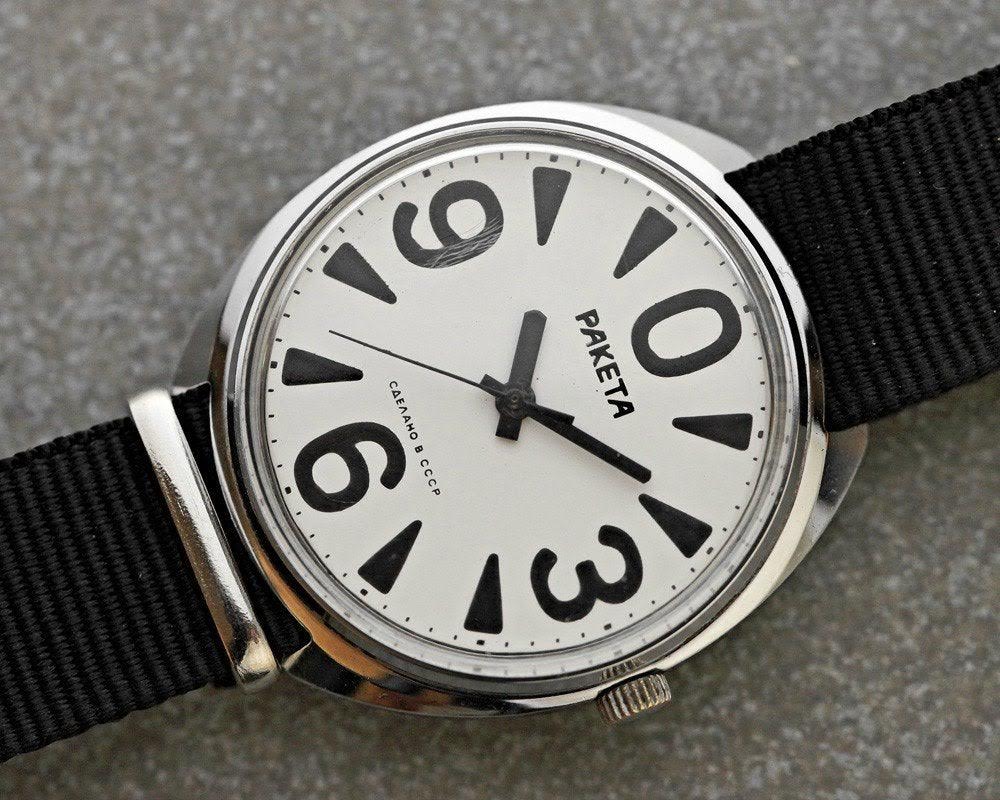
Raketa Big Zero
My favorite story from Russian watchdom is that Gorbachev wore one of these, and once pointed to the 0 marked in place of a 12 to illustrate to a journalist that perestroika meant “the Russian people are starting from scratch!” This story is likely untrue: Gorbachev preferred Omegas. But the Big Zero (which also features a very big 3, 6, and 9) remains one of the best designs Raketa (“Rocket”) ever produced. At XXmm, it’s really not that big, but it’s thick painted numerals, stubby hands, and toothmark indices give it a bit of oomph on your wrist. On close inspection you can see the irregularities in dial details that make it look charmingly hand-drawn, but not in a MoMA gift shop sort of way.
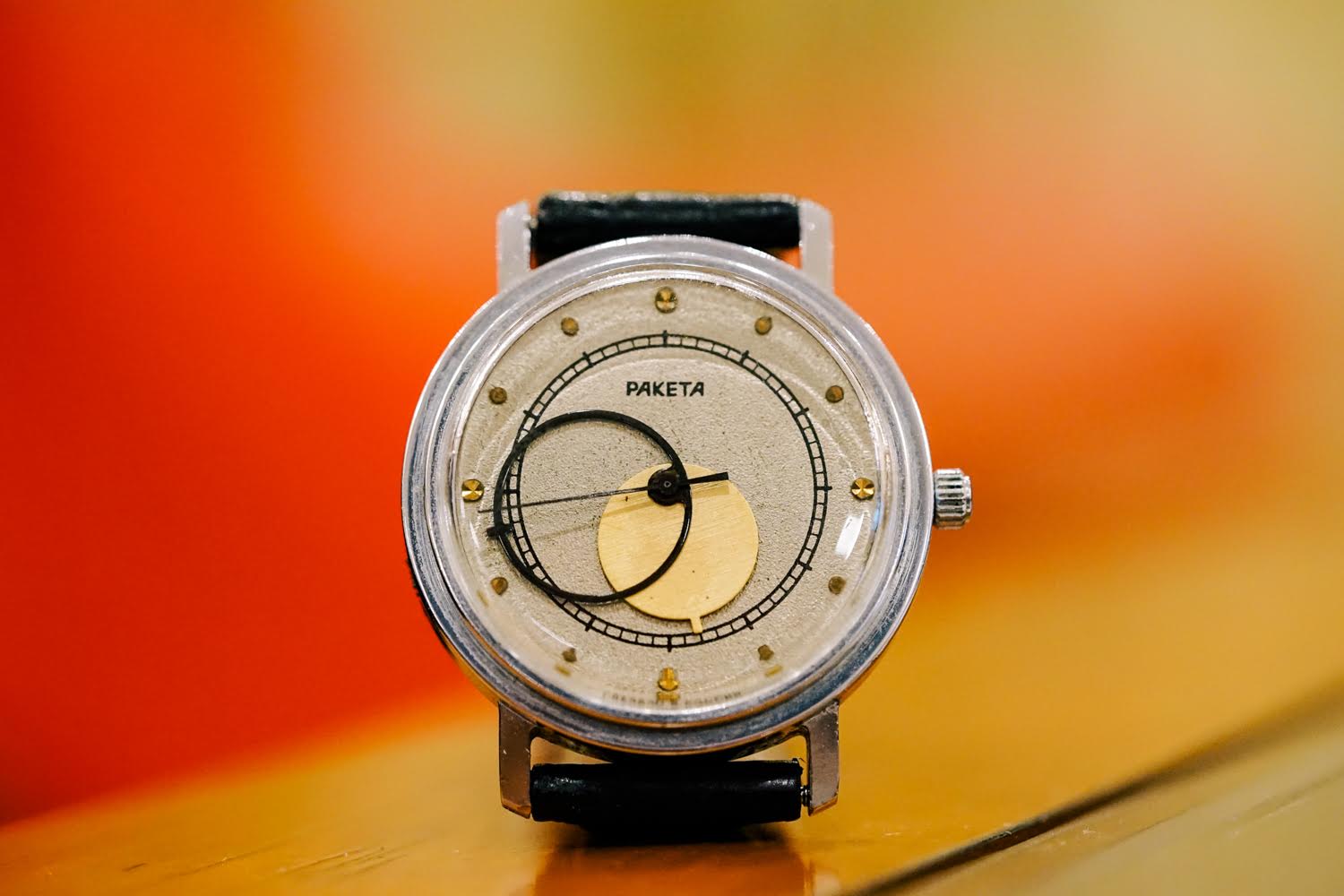
Raketa Kopernik
The Russians beat America into space. Their watches won’t let you forget it. The Kopernik approaches Swatch levels of whimsy, with its golden sun for an hour hand and full-moon minute hand. More interesting than a moonphase, in my opinion, and about as useful. Every once in a while the hands converge to create an eclipse, which you should celebrate with a drink. It’s worth noting that the Petrodvorets Watch Factory, where these were made, was founded by Peter the Great to produce semi-precious carvings for the Royal family, and resembles some kind of terrifying ziggurat with a spear on top.
These are just a few of the examples of Russian watches floating around the internet’s causeways. Unlike a luxury watch, finding the right Soviet timepiece for you takes more time than it does money. But with a little time, a keen eye and perhaps a Cyrillic-to-English translator, you’ll be ready to stunt on the next guy you see waiting outside the bar for his Uber Black, who, after all, probably bought his Rolex at the mall.
This article appeared in an InsideHook newsletter. Sign up for free to get more on travel, wellness, style, drinking, and culture.
